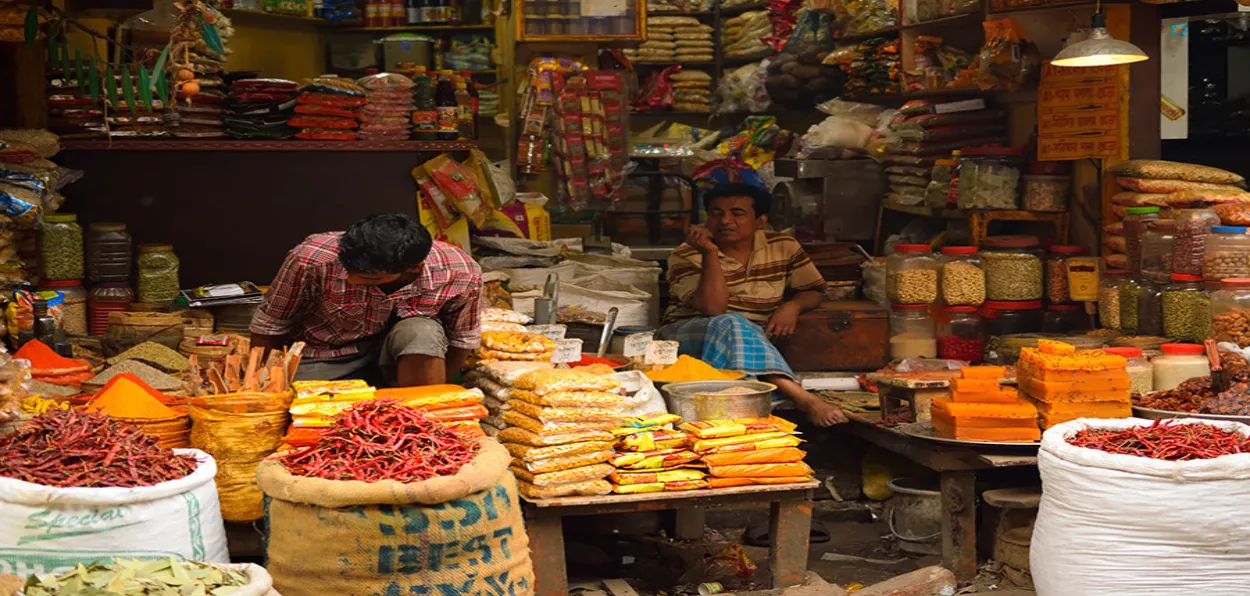
 Rajeev Narayan
Rajeev Narayan
An interesting trend is being observed in India’s FMCG camp today—with sales slipping in urban markets, companies are increasingly shifting focus to smaller cities and rural India, where demand still remains strong. That’s because urban middle-class spending has buckled, with ‘real’ food inflation crossing the 10-per cent mark. Official figures paint a rosy picture, claiming a year-on-year retail inflation rate at just 1.55 per cent for July 2025, an eight-year low. But a whiplash is still being felt by the people, leading to lower spending. On the back of this lower urban FMCG companies like Britannia, Nestle, Dabur and others are also feeling the pinch.
Demand Tapering Off
Top FMCG firms admit the consumption dip is led by India’s metros. Compared to smaller towns, metros contributed 2.4 times to the slowdown, an alarming statistic. These firms, which had forecast a strong fiscal in April, now see middle-class sales shrinking. Homegrown firms have seen profits drop 18 per cent, with urban demand tuning off like a blown bulb.
Urban FMCG sales growth have dropped from 10.1 per cent in Q1 FY24 to 2.8 per cent in Q1 FY25, further slowing down to 2.6 per cent in Q1 FY25, according to research reports. Urban consumers are showing a preference for smaller, cheaper product packs to manage costs, which is sustaining overall volumes but putting pressure on profitability. For several consecutive quarters, rural demand has shown stronger growth than urban demand.
That begs a question. Are consumers not eating as many munchies because of higher prices and a slowdown, or is this the beginning of a health fad targeted at weeding out fat, high sugar and preservatives? Whichever option one ticks, only one trend is being seen amongst shareholders in these companies—greater focus on smaller towns and cities, and rural India.
Brand Loyalty is Dying
Market-watchers have their own theory, that the cost-conscious Indian consumer is still eating biscuits and instant noodles, and dipping into ketchup and chutneys, but with no brand loyalty. “People are saving every rupee they can. Local Indian brands are cheaper and offer a desi taste alternative,” says Vikas Trivedi, who recently quit his job with leading FMCG firm Dabur India. Established brands have high overheads due to input, marketing and salary costs, which are passed on to the consumer. That is creating a backlash from consumers, who are now more finicky than ever about pricing.
The shift is happening despite the Government’s efforts to perk up consumption through outlays for schemes targeting higher rural spends. In her Budget speech a few months back, Finance Minister Nirmala Sitharaman unveiled an allocation of over Rs 2 lakh crore for agriculture and Rs 1.5 lakh crore for rural initiatives. “I am announcing schemes for employment and to skill the youth, to rejuvenate rural and urban consumption,” Sitharaman then said.
At that time, FMCG big guns saw this as a precursor to runaway demand and sales growth. This wave of propping up rural demand is what led ITC Chairman Sanjiv Puri to feel the infrastructure push would transform the country into a manufacturing hub. “Policies to promote physical and digital infrastructure, backed by an aspirational society and young demographics, are growing the market, increasing FMCG’s immense potential,” Puri had said.
Projections are Falling Flat
In its Brand Footprint Report, research firm Kantar projected that rural markets would provide an impetus to FMCG resurgence, especially as they account for 65 per cent of India’s households and make up 52 per cent of volumes (for FMCG firms). The report added that rural volumes would grow from 4.4 per cent in 2024 to 6.1 per cent in 2025.
That is not happening and the projections have fallen flat in just a few months, ostensibly at the altar of stagnant or depleted personal income, steep inflation and resultant price hikes. Notably slimmer than Indians’ wallets now is their appetite for packaged foods like biscuits, namkeens, sweets and savoury items, and juices and beverage concentrates.
The U-turn in the FMCG sales epicentre and focus is startling. Last year, FMCG firms Hindustan Unilever, Dabur, ITC, Marico and Tata Consumer said rural demand lagged behind urban by leaps and bounds. Financial heads at top firms admitted then that despite all efforts, they hadn’t been able to stop the slide, losing out to “liquidity pressures, inflation and patchy monsoons”.
Business Reality Kills Logic
Today, that logic has turned on its head, with rural sales outsprinting urban consumption. The dumbfounded FMCG timidity stems from business reality. After all, rural markets are way smaller than those in urban India, remoteness of rural hubs translates into higher transportation costs, the geography is scattered, and poor road and Internet access make inventory management and IT-enablement near impossible, and preferences and diversity are vast and challenging.
In the larger economic scheme, this is disturbing, particularly because the numbers and stakes are daunting. According to the India Brand Equity Fund (IBEF), the FMCG market was valued at $192 billion (Rs 16,20,559 crore) in end-2024. Then growing steadily, this market was expected to double in size by end-2025. The stakes, therefore, are high. Even from a national perspective, it is crucial because the FMCG space employs over 30 lakh people.
There are some categories in the FMCG space that are saving India the blushes, such as Smartphone shipments. India emerging as a key manufacturing hub and IDC has predicted a 5-per cent growth in worldwide Smartphone shipments in Calendar 2025. But there’s a monkey wrench here too, that big-brand sales are declining and cheaper ‘Assembled in India’ brands are coming to the rescue. TV and electronics goods sales are helping.
ALSO READ: Guwahati's Dr. Yasin Ali treats Naga infant with innovative procedure
The larger picture, though, remains grim, recounting a tearjerker tale. Employment has to grow. That will grow earnings. Disposable incomes and spends will follow. Demand will perk up. Biscuits and ‘bhujiya’ will find more eaters. It won’t be just FMCG firms making merry. India’s auto, alcobev, tourism, hospitality and ancillary sectors will grow in tandem—one large, happy family and country. It does take just one spark to start a bonfire… The spark is missing.
The writer is a veteran journalist and communications specialist.
